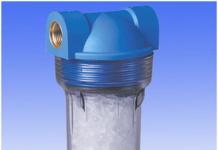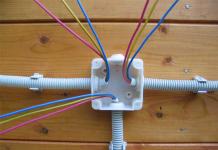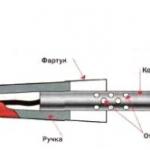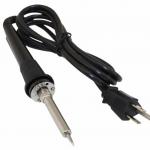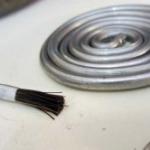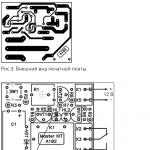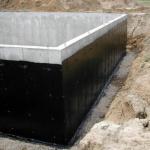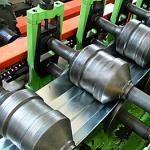It is customary to use pumping stations in order to organize autonomous and high-quality water supply in a private house. They can also be used to improve the quality of the water supply in the apartment. Of course, like any other device, pumping stations can break down. However, if there is a desire, even without much experience, you can repair the equipment yourself without any problems.

Peculiarities
Pumping stations often consist of a water pump, a hydraulic accumulator, a pressure switch and a pressure gauge. Their main task is the automatic intake of water from a certain source and its delivery to the house. The station also allows you to make the water pressure in the water supply better, protect the water supply system from water hammer and organize a supply of water if there are any problems with water supply.

Mostly surface pumps are used. For the installation of pumping stations in a private house, a separate room with good sound insulation is most often allocated. They can also be placed in caissons.
The power of the pump should be sufficient to lift water from the well and deliver it to the house. One of the most important parts of the station is the hydraulic accumulator, its storage tank must contain at least 20 liters. The hydraulic accumulator allows maintaining a constant pressure in the pipelines of the station. The most successful battery model is a metal cylinder, inside of which there is a rubber membrane. When the station is working, the membrane is stretched, and at rest it occupies the same position.


The pressure switch turns the pump on and off depending on the water level in the tank. Water enters the tank until it reaches a certain maximum level, and then the pump is turned off. As water is used for various purposes, the pressure decreases. When the pressure reaches the minimum mark, the pump will turn on again and water will flow into the tank. A pressure gauge is needed to determine the pressure level in the water supply system.


Each element of the pumping station can either work on its own or as a single system. You can choose both a completely finished pumping station, and assemble it yourself, taking into account your own needs. Pumping stations can safely provide water not only to the house, but also to the bathhouse and other buildings on the site. When the principle of operation of the station is clear, it is easy to identify and eliminate many breakdowns.

Causes of the malfunction
Like any device, pumping stations can have various malfunctions. Among them are the most common ones, you should learn a little more about them.
The pump turns on too often:
- If at the same time the water comes in jerks, the cause of this malfunction is most often a non-working automation unit, in particular, a pressure gauge.
- If the pressure gauge readings drop sharply, then it is then that the water will go in jerks. This occurs as a result of the failure of the pressure accumulator membrane, which changes its dimensions based on the volume of water. To determine this breakdown, press the nipple that provides access to the membrane. In the event that you can hear air oozing out of it, then everything is in order. If water flows out of it, then the serviceability must be eliminated by replacing the accumulator.


- Too small volume of accumulator. When choosing a pumping station for a country house, many people want to save money by choosing a small hydraulic accumulator (24 liters or less). Such a volume will be very small, since the hydraulic tank eventually collects only 50 percent of the water of its total volume. Thus, in a tank with a volume of 24 liters, there will be about 7 to 12 liters of water in total, which are quickly consumed. As a result, the pump has to be turned on frequently. To eliminate it, it is recommended to additionally install another accumulator.

Incorrect pressure switch setting. The difference between the pressure value at which the pump is turned on and off should simply be made larger. Moreover, it is important that the pressure value at which the pump will turn on must be set to 0.2 atmospheres less than the pressure value in the accumulator. The pressure in the accumulator is checked by connecting a pressure gauge to the nipple. The optimum pressure is 1-1.5 atmospheres. If necessary, it must be bled or pumped up using a pump, for example, an automobile one.

- Check valve clogged. In the event that the valve does not work and water leaves the system, the pressure decreases and the pump turns on every 10-20 minutes. Often, just cleaning the valve is enough, but sometimes it needs to be replaced.
- Damage to the spool, which is located at the top of the accumulator. Eliminated by replacing the nipple.
- Leaky pipeline or its connections. As a result, air enters the system and water flows out of it.
- The pump pumps water together with air. This is due to the decrease in the water table. It is necessary to solve this problem by lowering the pump or nozzle below.
- Malfunction of the plug, socket, cord, burning or oxidation of the contacts in the place where the electrical cable is attached to the motor.




- The pumping station does not turn off: Lack of water in the source, the so-called "dry running". This malfunction can lead to the burning of the pump, since it is not cooled by pumped water. To prevent this breakdown, it is best to use sensors that show the water level. They are electric or float.
- Suction line resistance value too high. Most often this happens if the length of the line is too long or the diameter of the pipes is too small. To check, immerse the suction pipe in a container of water next to the pump. In the case of a normal rise in pressure, it is necessary to look for the cause in the route. For example, laying pipes with a large diameter, laying the main line in a straight line, minimizing the number of bends and connections.




- Air leakage into the line occurs due to poor connections (leaky). Detected by observing the pressure gauge after the station is in the off state. In the event that the pressure does not decrease, then everything is in order with the system in terms of tightness, and if it decreases, then it is necessary to look for a leak in the system.
- Non-return valve or filter on the pipe does not work. They need to be removed, cleaned and reinstalled.
- Faulty pressure switch. Sometimes the pump cannot build up the necessary pressure due to the fact that the pressure value at which the pump turns off is too high. In this case, it is enough to adjust the shutdown limit. Relay contacts may also fail. In this case, a dark coating forms on them, which is cleaned with sandpaper. The pressure switch may also stop working due to salt that is deposited on the adjustment springs or a clogged inlet.
- The impeller has worn off. This often happens if the pressure at which the pump turns off is set much lower than the maximum pressure. In this case, it is often sufficient to simply replace the impeller.
- Low voltage in the network. In this case, it happens that the pump works, but the pressure switch stops. A voltage stabilizer could be the solution.




The motor is running, but the water is not flowing:
- The impeller does not rotate. This may be due to both low mains voltage and a blown capacitor in the terminal block. The latter is checked using a tester.
- There is no water in the well or well.
- Clogged filter or non-return valve.
- The impeller jammed. In this case, you can try to turn the shaft with your hands, which may become covered with salts. If it was not possible to scroll it manually, then it is worth removing the protective cover and unlocking the impeller.
- The pump does not draw water. The reason for this failure may be the lack of optimal pressure in it.
- The flow of water is uneven. It happens that the pump works stably, but at the same time water flows in uneven volumes. The main cause of this malfunction is air in the pipeline. To eliminate it, it is advisable to check the water level in the well or well, and, if necessary, adjust the position of the water intake hose.



How to fix?
Do-it-yourself repair of a pumping station is a completely doable procedure. However, it must be remembered that before you fix the problem and resume normal water supply, you should drain all the water and disconnect all elements, including the expansion tank, pressure gauge, pressure switch, and so on. If the engine is not running, the first thing to start with is to check the supply voltage. Then it does not hurt to check the entire electrical circuit for connecting the station. It can also happen due to contamination of the pump, which means that it should be disassembled and cleaned. In this case, it is advisable to install an additional filter. If the fuse has failed, it must be replaced. The fan impeller must spin freely. If not, then the engine is stuck. In this case, the motor cannot be started until the problem is corrected.

It is worth checking the contacts of the pressure switch. It would also be useful to check the terminal capacitor. If there is no water in the device, then you just need to fill it in there and reduce the suction height if it is no more than 7 meters. Make sure that there is no suction in the suction pipe and clean the non-return valve. Next, you need to adjust the voltage stability, reduce the resistance in the discharge pipe, clean the pipeline or lay a new one along a more direct path (without sharp bends).

If the engine is running but not supplying water, you need to:
- check the water level for the intake;
- eliminate air leakage into the pipeline;
- clean the supply part of the pipeline;
- fill the system with water to eliminate the air lock;
- eliminate the reasons why the equipment runs dry.

Insufficient water supply is eliminated as follows:
- clean the pump and pipeline;
- fix a pipeline leak;
- remove the slightest air leak in the suction section of the pipeline;
- in case of significant corrosion, replace the suction section of the pipeline.

If there is an excessively frequent switching on / off of the pumping station, then you need to:
- Replace damaged accumulator diaphragm or hydraulic tank.
- If the compressed air pressure is low or there is no compressed air in the tank at all, the tank may have been damaged due to corrosion. You should remove it, and then pump air into the tank to the required pressure according to the pressure gauge.
- A foreign object has blocked the non-return valve and it cannot close. In this case, it is necessary to carry out actions to unlock the valve.

The pumping station does not provide normal pressure:
- Too low values are set on the pressure switch, they are being adjusted.
- The inlet of the pressure switch is clogged, it is necessary to clean it.
- If there is a blockage in the supply pipeline or the working body of the pump, then turn off the power. Then clean the pipeline and pump.
- In the presence of air in the pipeline, the tightness of the joints is checked, it is desirable to make as few joints and bends as possible.

If the pumping station works, but does not turn off, then the pressure switch is set to a very high value and needs to be adjusted.
Manufacturers and reviews
On the market you can find pumping stations from various manufacturers. Of course, they all have their own characteristics. However, when choosing, you should rely on real reviews from users. For example, pumping stations Pedrollo They feature beautiful appearance, great performance and low heat when used for a long time. But among the shortcomings, it is worth noting low-quality rubber, the taste of which can sometimes even be felt. Automation also showed itself not in the best way, as well as the cast iron body.


Stations Espa work great for the first 2.5-3 years. The pumping stations of this manufacturer do not have any obvious shortcomings. Practice shows that as a domestic use, the devices show themselves to be of high quality and reliable. The only thing they need is the correct conditions of use (humidity, temperature, and so on). Unipump pumping stations fully comply with the declared characteristics and are practical in operation. Great for country houses, as they are easy to use and fully automated. Rarely after a few years of use there are minor breakdowns.

My pumping station has been serving faithfully for the eighth year. On the case, of course, traces of rust appeared due to condensate, this does not affect its operation in any way, it copes with its task. Like any mechanism, the pumping station requires periodic maintenance in order not to lead to serious damage. There are also minor problems that are easily fixed. For example, a pumping station often turns on, why this happens and what to do in this case.
Reasons for frequent switching on of the pumping station
In fact, there are only three reasons for the appearance of such a malfunction as frequent switching on. It is quite easy to identify them, as well as to eliminate them.
Why does the pumping station often turn on:
- low air pressure in the accumulator or its complete absence;
- rupture of the membrane (pear) of the accumulator;
- check valve failure.
What to do and how to fix the breakdown
Naturally, first you need to find out what this problem is connected with. We will move from simple.
1. Pressure in the accumulator. On the rear wall of the hydraulic tank there is a pneumatic valve, which is closed with a plastic cover.

We remove the cover, for convenient unscrewing there are special recesses for the fingers.

Let's check if there is any air in the hydraulic tank. We press the nipple with a match, a characteristic sound of escaping air will be heard. No sound means the tank is empty.

You can skip this procedure, just use the pressure gauge. According to the rules, it should be by 0.2 bar below the minimum start pressure. More about it. If the indicator is less than the desired level, we take the pump, I use the usual manual one. Having pumped up a little, we check the pressure.
An important point: first disconnect the pumping station from the network, open the tap (mixer) and drain the water.
How to determine the desired pressure without a pressure gauge? I do this process by eye. When we pump air into the tank, water starts flowing from the faucet. You need to pump until the pressure becomes almost the same as if the pumping station was connected to the network and raised water.
2. Membrane integrity. Again, we press a match on the pneumatic valve, if water has flowed from it, definitely, the pear has torn and an urgent replacement will be required.

To get to it, I had to disconnect the pumping station from the suction line, as well as remove the pressure hoses from the outlet located on top.

We unscrew the bolts on which the tank cover is attached, it also presses the membrane. We take out the torn pear, wash and dry the tank. Assemble in reverse order with a new membrane.
By the way, the gap may be due not only to the fact that the membrane has lost its qualities, worn out. This may be due to insufficient air in the reservoir.
3. Check valve. To check, we disconnect the pumping station from the suction line, no water should flow from the valve.

If the valve leaks water, do not rush to buy a new one. Remove it and inspect carefully, it is possible that a foreign object has got inside and is preventing the valve from working properly.
We have analyzed the possible reasons due to which the pumping station often turns on. It is better not to bring to breakdowns at all, to carry out maintenance on time. Recall that the average life of a pumping station is 5 years.
Building your own country house or a comfortable summer house is impossible without creating a water supply system. During the construction of a water supply system based on an autonomous source of water supply (for example, a well or a well), the main unit of the system is a set of equipment that maintains constant pressure in the pipelines.
This is a rather complex technical device, in which, for one reason or another, malfunctions can occur. A competent owner needs to know the main possible malfunctions and solutions for them, for example, why it often turns on.
The composition of the equipment of the pumping equipment station +
If you want to quickly determine the causes of possible malfunctions of pumping equipment, you need to know its design and principle of operation. So, the most widespread models of pumping stations consist of the following main units. And the ownership of its own water supply system imposes on the owner the obligation to maintain the equipment. If may be different. So, any responsible homeowner must know how to repair the pumping station with their own hands.
It can operate on various principles (for example, vortex or centrifugal pumps), be located on the surface of the earth or be immersed directly into the well. Such pumps have different capacities, which should fully meet all the needs of the residents of the house. From continuous operation, such devices wear out, therefore, to maintain a constant pressure in the water supply system, additional components and devices are used, described below.

To maintain a stable pressure in the water supply system, hydraulic accumulator. One of the most common models of such devices is a tank with strong walls, inside of which there is a membrane made of elastic rubber. During the operation of the complex of pumping devices, water enters the accumulator tank, the rubber membrane is stretched. After the pumping of water is stopped, the rubber membrane, trying to return to its original position, begins to squeeze out water into the cavities of the pipelines. Thus, a constant pressure is maintained in the water supply.

You may be interested in information on which one to choose
The operation of the pumping device and the hydraulic pressure accumulator "conducts" block with control mechanical relay, which is a set of mechanical sensors and springs. The mutual position of its parts sets the level of minimum pressure in the pipes of an autonomous water supply system and the difference between the minimum and the highest values.

Incorrect operation of any of the components of the station can lead to the fact that the complex of pumping devices will constantly turn on, which will lead to premature wear and subsequent failure.
Incorrect operation of the pressure regulator
A possible reason for the constant switching on of the pressure pump in the equipment complex may be the incorrect operation of the control mechanical relay. In order to check the adequacy of its activity, it is necessary to carry out a number of manipulations.
If your equipment has a built-in pressure gauge, then check the correctness of its readings. This can be done with an ordinary car pump. After you have verified the measuring device, proceed to check the adjustment unit. First remove the protective plastic cover.
To adjust the mechanism in the system, it is necessary to create a working pressure. It can be simulated by pumping air into the pressure accumulator with a car pump with a built-in pressure gauge. Air is pumped into the accumulator bottle through a safety valve.
Set the pump in the water pipes to the minimum pressure. Use a flat head screwdriver to turn the adjusting screw that secures the large spring of the station control relay. Typically, turning the screw clockwise will increase the pressure threshold at which the pump starts, and turning the screw counterclockwise will decrease this threshold.
In the event that the pump often turns on, most likely, the threshold is somewhat overestimated. Turn the large spring screw counterclockwise and bleed and re-inflate air with the pump several times. The automatic relay should operate after bleeding the air, when the minimum pressure threshold specified in the operating instructions for the station is reached.
Too frequent switching on of the pump in the equipment complex can also occur due to an incorrectly set maximum threshold indicator on the automatic relay. The large spring of this block regulates the minimum threshold, and the smaller spring is responsible for the range between the start and stop threshold of the pump. After setting the minimum level, you must also adjust the range by setting the upper threshold to a value of 95 percent of the maximum allowable pressure in the system.
If the range is too small, then the pumping device will not pump enough water into the system in one cycle of operation, which will lead to an increase in the frequency of its inclusion. The small relay spring is also adjusted with a simple slotted screwdriver. The correctness of the range setting is checked by several cycles of pumping and bleeding air with the observation of the pressure gauge.
Another reason for the malfunction of the automation unit can be an elementary clogging of the relay inlet. This may be due to contamination of the water with foreign impurities. Clean the hole with a stiff brush.

Checking the injection pump
Frequent switching on of the pump may be due to insufficient power supply to the device. In this case, the pump impeller simply will not be able to develop the necessary power to create the maximum pressure in the pipelines of the system. The pump will have to turn on and work again and again to fill the pipelines with water.
The problem of insufficient power can be hidden in both the mechanical and electrical parts of the pump, as well as in the power supply of the device.

The working units of the mechanical part of the pumping device can wear out over time with a decrease in the maximum output pressure. You can check the pump pressure by disconnecting it from the system and evaluating the water jet visually. In addition, the pump can be forced to start, bypassing the automation unit and assess the maximum pressure according to the pressure gauge of the water supply system. As a rule, the working units of the pumps are not repairable and are replaced entirely.
The mechanical part of the centrifugal pump also has an inlet and outlet, which can be populated after a long period of operation. If such a malfunction is detected, mechanical cleaning of the nozzles or washing them with a cleaning solution will help.
Checking the electrical part must begin with the terminal box. From prolonged use, the contact surfaces may oxidize, the conductivity of the electric current may decrease, and the pumping device will not be able to deliver the necessary power. To eliminate this shortcoming, de-energize the equipment, open the terminal box cover and clean the contact surface. You can use fine sandpaper for cleaning.
Insufficient power of the centrifugal pump may be the result of an unstable voltage in the power network of your home. The voltage stability check must be carried out already with the device running. With unstable current levels in your home's power grid, you need to connect a voltage stabilizer.
Checking the pressure accumulator
The next device that needs to be adjusted or checked is the accumulator.

Excessively frequent switching on of the centrifugal pump in the station may occur due to the fact that there are damages in the accumulator tank that cause water leakage. Also, during operation, the rubber membrane of this device may be damaged or significantly stretched.
You can correct the deficiency either by replacing the components, or by completely replacing the accumulator.
By the way, checking the integrity of the rubber membrane in this device is very simple. This can be done without disassembling the tank. You just need to press the nipple valve located on the part of the pressure accumulator that should be filled with air. When you press the valve, air should be bled from it. If water comes out of the valve hole, then things are bad and the rubber membrane, or even the entire hydraulic pressure accumulator, will have to be changed. How to install u You can read in our article.
Unstable, jerky operation of the centrifugal pump complex in the station can also be the result of hidden leaks in the autonomous water supply pipe system. The situation is complicated by the fact that leakage can occur in a pipe located under the surface of the earth. It is quite difficult to identify such a malfunction.
However, if you approach such a problem consistently, then it can also be solved. To do this, it is necessary to sequentially, segment by segment, shut off the entire water supply system and pump water into it under pressure and leave it for a while. A pressure gauge must be connected to each segment to be tested. If for several tens of minutes the pressure gauge needle maintains its position, then this segment of the water supply system has retained its tightness. In this case, you should go to the next segment and so on until a leak is detected.

As you can see, troubleshooting that causes the station centrifugal pump to turn on too often can take quite a long time. However, without fixing this breakdown, you run the risk of damaging your pump much earlier than the deadline set by the manufacturer.
To get a deeper understanding of the composition and repair procedure, watch the training video lesson.
Prices for pumping stations
pumping stations
Video - Why the pumping station often turns on





To provide country houses and plots, prudent owners equip convenient and completely independent water supply and sewerage systems. What is it, a necessity or an opportunity to save money without depriving yourself and your family of the benefits of civilization? To begin with, it is worth realizing that, despite all the advantages of dachas and country houses, they are often remote from the centralized supply of electricity, water and wastewater systems.
A pumping station is necessary for the smooth operation of the water supply system
The problem in the work of the water supply of a private house
The owners of houses are distinguished by their ingenuity and stubbornness, which help them to provide the residents of the house with clean water, normal plumbing conditions and peace of mind in a short time. Autonomous water supply, as well as sewerage in the form of a shambo or specialized pits, is the best economical option without additional costs, the functionality of which is not affected by external factors, unscheduled power outages and unexpected interruptions in water supply.
Pumping stations that provide raising water from the well greatly simplify life, but annoying failures occur in the deferred mechanism. Owners of pumping installations sometimes face a problem when the pumping station is often turned on. The reasons for such an unpleasant phenomenon may lie in the structure of the pump, station parts, non-compliance with operating rules and other factors that do not always depend on you. Why does the station for supplying water to the house fail? The answer to this question requires an integrated approach.
The principle of operation of pumping stations for your well
Clean, healthy and completely safe water from a well in the yard is the most common solution to the problem of drinking water access in a country house. This is exactly the case when long-tested devices do not need advertising. Wells are easy to operate, unpretentious in cleaning and durable in comparison with expensive tanks or wells.
With the help of modern technologies, manufacturers did not violate a working, functional system, they only finalized it for your convenience. Pumping stations of different power and principle of operation will simplify the process of water intake, eliminating long and tedious mechanical lifting of water from the well and its transportation to the house.

Regardless of the principle of operation, pumping stations have a similar structure of the main parts. So, the general structure includes a pump, a container for storing the taken water (hydraulic accumulator) and the parts connecting them (relays, valves, etc.).
Thanks to the pumping station, water does not immediately go from the well to your faucet. With the help of a relay that regulates the pressure inside the system, water is pumped out of the well by a pump, then enters the tank and is stored there until the tap is opened. When the accumulator is empty, the pumping station turns on the pump and re-intakes water.
The operation and shutdown of the station occurs only when necessary, in other cases the entire mechanism is in “sleep” mode, without consuming expensive electricity. Additional parts of the mechanism, such as a check valve, ensure the correct operation of the device, an auxiliary filter guarantees cleaning of the water that comes to your table, and the relay controls the water intake, preventing the well from draining.
The picture looks clear, and special skills are not needed to understand the essence and problems in the operation of the pumping station. Therefore, when the pumping station often turns on and off what to do and how to act, you can decide on your own without outside help.
Types of breakdowns of the pumping station installed on your well or well
Because of what the pumping station does not perform the functions assigned to it? Even if you installed the station correctly, connected all its parts correctly, provided it with protection against power surges, checked the pressure status in the pump, the pumping station is prone to breakdowns, malfunctions, and you should be prepared for such trifles.
The water supply station often turns on, what should I do? Consider all problems comprehensively, because the system for selecting and transporting water to a country house is similar to the human body, and each symptom will certainly lead you to a faulty part.
There are typical, even standard and common problems that overtake pumping stations. Such as:

Failure of any component of the pumping station leads to a complete cessation of work
- blown fuse, leading to a lack of power to the entire system;
- lack of the proper amount of water in the system or in the well;
- incorrect pressure adjustment (pressure is not systematized);
- ingress of air, debris and other foreign objects into the system;
- problems with the tank, check valve;
- impeller blockage due to low pressure;
- incorrect relay settings.
All these reasons lead to malfunctions in the operation of the pumping station, and as a result, the station begins to constantly turn on and off. Keeping such a system under control is simply impossible. Troubleshooting is done immediately, without waiting for the miraculous healing of the device.
Repair work precedes the complete emptying of the station, then the entire system is cleaned of debris, pollution, sludge, and depending on the causes of the malfunctions, the components change, the pressure is adjusted and the operation of the relay, pump, and filters is adjusted. If the suction of the required amount of water is disturbed, liquid is introduced into the system, the suction level in the pipeline is adjusted and the valve is cleaned.
The pumping station often works, what should I do? The most common problems leading to such station malfunctions are a damaged diaphragm, slight pressure in the tank, or valve opening. In such situations, the membrane or tank is completely replaced with new components, cracks and gaps due to corrosion are repaired, air is added to the tank and the check valve is closed.
Malfunctions in the pressure regulator of your pumping station
Turning the entire pumping system on and off is a process that signals serious problems and should never be ignored. Incorrect operation of the relay is one of the reasons for the occurrence of such consequences. To test the relay, you must draw up a step-by-step plan for disassembling the station into parts.
The first assistant will be a pressure gauge, which either comes with the station, or you can buy it at any specialized store.
Instead of a pressure gauge, they use a car pump. Measuring instruments are amenable to verification, then the adjustment units of the pumping station (special pressure is created in the system). Using a safety valve, I pump air into the battery.
If the pump often turns on, then most likely the pressure indicator in the system is too high. Another cause of frequent malfunctions, when the pump has to be turned off frequently, is incorrectly set critical pressure levels in the relay. The springs in the block regulate exactly these levels, so when checking the relay, the large and small springs are adjusted to the desired range.
With an excessively low range, the station is not able to pump enough water from the well, because the pump will pump water more often than usual. After manipulating the relay and springs (a screwdriver will do), pump the station several times and monitor how often it can turn itself off and then turn on again.
Pump Inspection
The constant operation of the pumping station also occurs due to power failures. In such cases, the system will not be able to create the necessary power for a full-fledged water intake from the well. The pump is forced to work again and again in an attempt to cover the lack of power due to additional water intakes. Therefore, he cannot turn off on a regular basis.
Weak power is due either to mechanical equipment or to problems in the power supply. Wear is subjected to pump components that are no longer able to produce the desired pressure drop. To begin with, the pump is disconnected from the system and the strength of the water jet is determined “by eye”. If the problem is still in the nodes, most often they have to be replaced, since they are difficult to repair.

For inspection, it is necessary to disconnect the pump from the pumping station
Branch pipes, both inlet and outlet, eventually become clogged with debris and stop working properly. Parts of the pipes are subject to oxidation, and the internal ones to wear. To check exactly the nozzles, the system is de-energized and tested, and if necessary, the nozzles are cleaned with sandpaper.General malfunction and fluctuations in the electrical system of the house can lead to a permanent malfunction of the station. Voltage stabilizers are a cost-effective solution for isolating a pumping station from power outages from a home.
Pressure accumulator test
If, when checking the pumping system, the relay, pump and power supplies turned out to be in full working order, the most suitable option remains - the battery, which is responsible for maintaining the desired pressure level in the entire system. In the accumulator, as in any part of the station, a hole, crack or other mechanical damage may appear due to which water that is not used by households slowly flows.
The pump is forced to make up for the lack of liquid in the storage tank and therefore it restarts many times a day. The rubber membrane over the years of use of the pumping station may wear out, stretch and lose its ability to maintain the tightness of the container. If problems are found with the container or rubber band, these parts are replaced with new ones.
The reliability of the gum can be determined without completely disassembling the accumulator, you just have to press the valve that holds the air. If water seeps out of the valve, the rubber band needs to be replaced.
Additional problems and preventive work
Pipes that provide a connection between a house and a well or a well, buried in trenches, can be the main cause of a malfunction in the operation of a pumping station, or rather leaks and damage to them. It is difficult to detect such a problem, because you have to dig meters of pipes underground.
Your main weapon is composure and the ability to consider the problem that has arisen in a complex manner.
To begin with, exclude the simplest and easiest parts in the process of checking, then inspect all the main parts of the pumping station, determine the health of the wiring in the house and the quality of the electricity supplied to the system.
Clean and healthy water is your health and well-being, therefore, savings at the pumping station, especially in cases of its malfunction, will recoup you and your family.
To prevent sudden failures in the operation of the pumping station, it is recommended to regularly clean the pump and well from silt, it will also be useful to follow the operating instructions for the station. Pressure and tension stabilizers will be your little safety rope.
Take care of yourself and your loved ones, providing not only a comfortable, but also a safe life in a country house.
